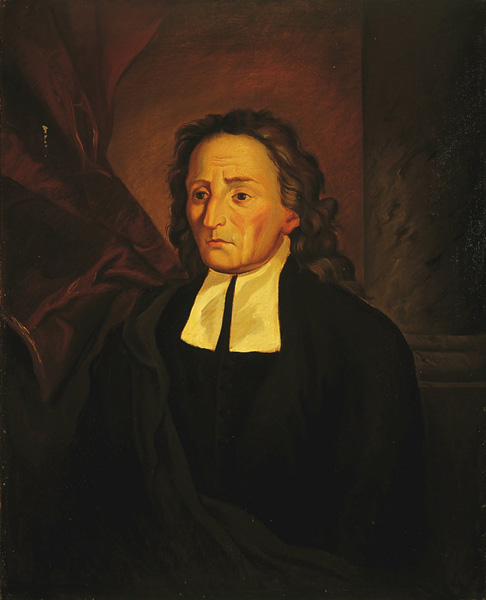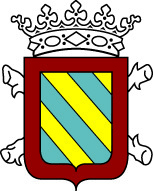|
Filip Willem Van Steenhuys
Filip Willem van Steenhuys or Filips Willem van Steenhuys (27 September 1593 – 1 May 1668), 1st baron of Poederlee and lord of Flers, Heerle, Gierle, Moerbeke, etc., was an office-holder in the Spanish Netherlands who served on the Great Council of Mechelen, the Council of Flanders, and the Privy Council of the Habsburg Netherlands. Family Filip Willem van Steenhuys was born, in Mechelen on 27 September 1593, only son of Willem van Steenhuys.Björn Volckaert, ''De leden van de Geheime Raad der Zuidelijke Nederlanden onder het bewind van de aartshertogen en Filips IV, 1609-1653. Een prosopografische studie'' on e-thesis On 14 January 1636, he married [...More Info...] [...Related Items...] OR: [Wikipedia] [Google] [Baidu] |
Chancellor Of Brabant
The Chancellor of Brabant was the head of the civilian government of the late medieval and early-modern Duchy of Brabant as president of the Council of Brabant. List of chancellors Late Middle Ages 16th century 17th century 18th century References {{Reflist Duchy of Brabant ... [...More Info...] [...Related Items...] OR: [Wikipedia] [Google] [Baidu] |
Snoy
The Snoy family or Snoy d'Oppuers currently Snoy et d'Oppuers, is a Belgian noble family. The current descendants are titled Barons Snoy and of Oppuers. Among the former residences of the family we find Château de Bois-Seigneur-Isaac, Meerbeek Castle and Befferhof Castle. Lord of Oppuers The family was important for the history of the Heerlijkheid of Oppuers. For generations, they were Lord of Oppuurs and Poederlee. Joost Snoy became after his marriage the first Lord of Oppuers. Philipp's first marriage to the important house made him one of the most important lords of Mechelen. His daughter Walburga Snoy inherited from her mother, Marie of Brimeu, the seigneurie of Poyelles ( Poederlee). During the 17th century, the family obtained political power and continued to intermarry with important houses. Philipp vander Aa, Lord of Oppuers,''married to Claire de Barres'' ** Walburga vander Aa, Lady of Oppuers:''married to Joost Snoy, son of Lambert Snoy''. *** Philippe Snoy, ... [...More Info...] [...Related Items...] OR: [Wikipedia] [Google] [Baidu] |
Chancellors Of Brabant
Chancellor () is a title of various official positions in the governments of many countries. The original chancellors were the of Roman courts of justice—ushers, who sat at the (lattice work screens) of a basilica (court hall), which separated the judge and counsel from the audience. A chancellor's office is called a chancellery or chancery. The word is now used in the titles of many various officers in various settings (government, education, religion). Nowadays the term is most often used to describe: *The head of the government *A person in charge of foreign affairs *A person with duties related to justice *A person in charge of financial and economic issues *The head of a university Governmental positions Head of government Austria The Chancellor of Austria ('), is the head of the Government of Austria. Since 2025, the Chancellor of Austria is Christian Stocker. Germany The Chancellor of Germany (') is the head of government in Germany. In German politics, the ' is equ ... [...More Info...] [...Related Items...] OR: [Wikipedia] [Google] [Baidu] |
1668 Deaths
Events January–March * January 23 – The Triple Alliance of 1668 is formed between England, Sweden and the United Provinces of the Netherlands. * February 13 – In Lisbon, a peace treaty is established between Afonso VI of Portugal and Carlos II of Spain, by mediation of Charles II of England, in which the legitimacy of the Portuguese monarch is recognized. Portugal yields Ceuta to Spain. * c. February – The English Parliament and bishops seek to suppress Thomas Hobbes' treatise ''Leviathan''. * March 8 – In the Cretan War, the navy of the Republic of Venice defeats an Ottoman Empire naval force of 12 ships and 2,000 galleys that had attempted to seize a small Venetian galley near the port of Agia Pelagia. *March 22 – Notable Privateer Henry Morgan lands in Cuba to raid and plunder the inland town of Puerto del Príncipe during the latter stages of the Anglo-Spanish War (1654–1660). * March 23 – The Bawdy House Riots of 1668 ... [...More Info...] [...Related Items...] OR: [Wikipedia] [Google] [Baidu] |
1593 Births
Events January–March * January 25 – Siamese King Naresuan, in combat on elephant back, kills Burmese Crown Prince Mingyi Swa on Monday, Moon 2 Waning day 2, Year of the Dragon, Chulasakarat 954, reckoned as corresponding to January 25, 1593, of the Gregorian calendar, and commemorated as Public holidays in Thailand#Other national observances, Royal Thai Armed Forces Day. * January 27 – The Roman Inquisition opens the seven-year trial of scholar Giordano Bruno. * February 2 – Battle of Piatka, Battle of Piątek: Polish forces led by Janusz Ostrogski are victorious. * February 8 – Siege of Pyongyang (1593): A Japanese invasion is defeated in Pyongyang by a combined force of Korean and Ming troops. * February 12 – Battle of Haengju: Joseon, Korea defeats Japan. * March 7 (February 25 Old Style) – The Uppsala Synod discontinues; the Liturgical Struggle between the Swedish Reformation and Counter-Reformation ends in Sweden. * March 14 &ndas ... [...More Info...] [...Related Items...] OR: [Wikipedia] [Google] [Baidu] |
Jurists From The Spanish Netherlands
A jurist is a person with expert knowledge of law; someone who analyzes and comments on law. This person is usually a specialist legal scholar, mostly (but not always) with a formal education in law (a law degree) and often a legal practitioner. In the United Kingdom the term "jurist" is mostly used for legal academics, while in the United States the term may also be applied to a judge. With reference to Roman law, a "jurist" (in English) is a jurisconsult (''iurisconsultus''). The English term ''jurist'' is to be distinguished from similar terms in other European languages, where it may be synonymous with legal professional, meaning anyone with a professional law degree that qualifies for admission to the legal profession, including such positions as judge or attorney. In Germany, Scandinavia and a number of other countries ''jurist'' denotes someone with a professional law degree, and it may be a protected title, for example in Norway. Thus the term can be applied to attor ... [...More Info...] [...Related Items...] OR: [Wikipedia] [Google] [Baidu] |
Académie Royale De Belgique
The Royal Academies for Science and the Arts of Belgium (RASAB) is a non-governmental association that promotes and organises science and the arts in Belgium by coordinating the national and international activities of its constituent academies such as the National Scientific Committees and the representation of Belgium in international scientific organisations. The RASAB was formed as a non-profit organization ( Association without lucrative purpose) in 2001 by the Dutch-speaking academy KVAB ( Koninklijke Vlaamse Academie van België voor Wetenschappen en Kunsten i.e. ''Royal Flemish Academy of Belgium for Science and the Arts'') and by the French-speaking academy ARB ( i.e. ''The Royal Academy of Science, Letters and Fine Arts of Belgium''). The association is headquartered in the buildings of the former Royal Stables at the Academy Palace, Hertogsstraat 1 Rue Ducale B-1000 Brussels. History Academies The RASAB was founded in 2001 by the two Belgian academies that are ... [...More Info...] [...Related Items...] OR: [Wikipedia] [Google] [Baidu] |
Biographie Nationale De Belgique
The ''Biographie nationale de Belgique'' (; ) is a biographical dictionary of Belgium. It was published by the Royal Academy of Belgium in 44 volumes between 1866 and 1986. A continuation series, entitled the ''Nouvelle Biographie Nationale'' (, ''New National Biography''), has been published by the Royal Academy of Science, Letters and Fine Arts of Belgium since 1988, with volume 16 appearing in 2023. Both the ''Biographie nationale'' and ''Nouvelle biographie nationale'' were digitised by the Fonds InBev-Baillet Latour and can be freely consulted on the Academy's website. A parallel biographical dictionary has been produced in Dutch since 1964, entitled ''Nationaal Biografisch Woordenboek'' (; ''National Biographical Dictionary''). It places more emphasis on figures important to the history and culture of the Flemish Region and is published by the Royal Flemish Academy of Belgium for Science and the Arts (with the co-operation of the Royal Academy of Dutch language and litera ... [...More Info...] [...Related Items...] OR: [Wikipedia] [Google] [Baidu] |
States Of Brabant
The States of Brabant were the representation of the three estates (nobility, clergy and commons) to the court of the Duke of Brabant. The three estates were also called the States. Supported by the economic strength of the cities Antwerp, Brussels and Leuven, the States always were an important power before the rulers of the country, as was reflected by the charter of the duchy. After the Duchy of Brabant and all Seventeen Provinces of the Netherlands came under the rule of the dukes of Burgundy, the States of Brabant became the host of the States-General of the Netherlands, who used to assemble in Brussels. In 1579 and 1580, during the Eighty Years' War, most cities and States of Brabant joined Dutch independence declaration (Union of Utrecht and Act of Abjuration), but Spanish troops reconquered most of the territory of the duchy and restored Spanish Catholic rule (except for North Brabant. See also Siege of Antwerp (1584-1585)). By the end of 1789, the States of Brabant ... [...More Info...] [...Related Items...] OR: [Wikipedia] [Google] [Baidu] |
Duchy Of Brabant
The Duchy of Brabant, a Imperial State, state of the Holy Roman Empire, was established in 1183. It developed from the Landgraviate of Brabant of 1085–1183, and formed the heart of the historic Low Countries. The Duchy comprised part of the Burgundian Netherlands from 1430 and of the Habsburg Netherlands from 1482, until it was partitioned after the Dutch revolt of 1566–1648. The 1648 Peace of Westphalia ceded present-day North Brabant () to the Generality Lands of the Dutch Republic, while the reduced duchy remained part of the Habsburg Netherlands until French First Republic , French Revolutionary forces conquered it in 1794 — a change recognized by the Treaty of Campo Formio in 1797. Today all the duchy's former territories, apart from exclaves, are in Belgium except for the Dutch province of North Brabant. Geography The Duchy of Brabant (adjective: ''wikt:Brabantian, Brabantian'' or ''wikt:Brabantine, Brabantine'') was historically divided into four parts, each with ... [...More Info...] [...Related Items...] OR: [Wikipedia] [Google] [Baidu] |
Chancellor Of Brabant
The Chancellor of Brabant was the head of the civilian government of the late medieval and early-modern Duchy of Brabant as president of the Council of Brabant. List of chancellors Late Middle Ages 16th century 17th century 18th century References {{Reflist Duchy of Brabant ... [...More Info...] [...Related Items...] OR: [Wikipedia] [Google] [Baidu] |
County Of Flanders
The County of Flanders was one of the most powerful political entities in the medieval Low Countries, located on the North Sea coast of modern-day Belgium and north-eastern France. Unlike the neighbouring states of Duchy of Brabant, Brabant and County of Hainaut, Hainaut, it was within the territory of the France in the Middle Ages, Kingdom of France. The counts of Flanders held the most northerly part of the kingdom, and were among the original twelve Peerage of France#Under the Monarchy: feudal period and Ancien Régime, peers of France. For centuries, the economic activity of the Flemish cities, such as Ghent, Bruges and Ypres, made Flanders one of the most affluent regions in Europe, and also gave them strong international connections to trading partners. Up to 1477, the core area under French suzerainty was west of the Scheldt and historians call this "Royal Flanders" (Dutch: ''Kroon-Vlaanderen'', French: ''Flandre royale''). Aside from this, the counts, from the 11th centu ... [...More Info...] [...Related Items...] OR: [Wikipedia] [Google] [Baidu] |





